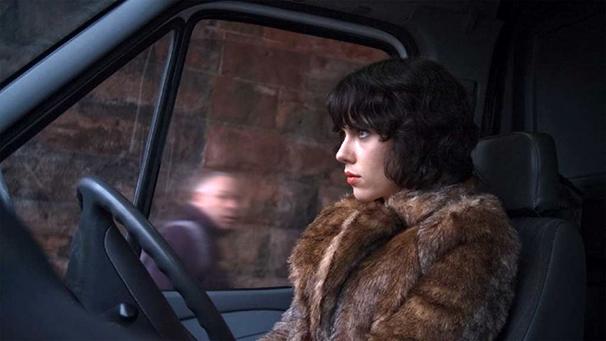
You are walking down the street, and a beautiful woman approaches you in a white van. She’s friendly — she asks you questions about yourself and compliments your features. It’s raining, and she offers you a ride home. You take it, and the two of you have a pleasant conversation. You get to your place and she wants to come inside. What do you do?
If that woman is Scarlett Johansson, you let her in, as many unsuspecting men do in Jonathan Glazer’s newest film, “Under the Skin.” But what happens when the men cross the threshold into darkness is a hypnotic, horrifying and visually stunning representation of death and humanity unlike anything else in theaters today.
Johansson plays an otherworldly being in the form of an unnamed woman with short black hair, killer curves and heavy makeup, who seduces strange men and consumes them for energy. Many of the scenes were filmed with the use of hidden cameras, capturing the disguised Johansson’s casual interactions with non-actors. These interactions can be humorous, but what happens once she has them in her clutches is dark, uncomfortable and scary in a way that audiences have to see to understand.
Most of the film is difficult to describe without spoilers or inadequate descriptions of the masterful cinematography and special effects, but the method in which Glazer presents the story, loosely based on the novel “The Crimson Petal and the White” by Michael Faber, is worthy of discussion and praise.
Rather than showing a deranged alien woman preying on innocent men, Glazer uses haunting symbolic imagery to portray the woman’s murder streak and saves the harsh realism for the moments when these men affect and hurt her.
Bolstered by a sharp and evocative score by Micchau and the Shapes front-woman Mica Levy, “Under the Skin” is a visceral film-going experience — it is not for the faint of heart, but worth taking a risk for a work of art that does not present easy answers or traditional plot devices. With a 107-minute running time mostly free of dialogue, the film begins with a visual bang but requires an investment of attention and thought from start to finish.
After careful consideration, the audience finds that Johansson’s character is not a monster. Certain scenes test this theory — there is a pivotal moment in which a family meets its demise on a beach and her character shows no remorse — but after the woman has been void of emotion for so long, she develops compassion for a deformed victim and longs to relate to another person. It is in her search for humanity that she finds the greatest challenges and is forced to pay the ultimate price.
Audiences see her as the alien — the other — but by the film’s devastating conclusion, the viewers are forced to question the implied goodness of humanity and their own inclination to take advantage of and destroy that of which they are uncertain.
“Under the Skin” opens April 4 in New York.
A version of this article appeared in the Thursday, April 3 print edition. Ife Olujobi is film editor. Email her at [email protected].





















































































































































